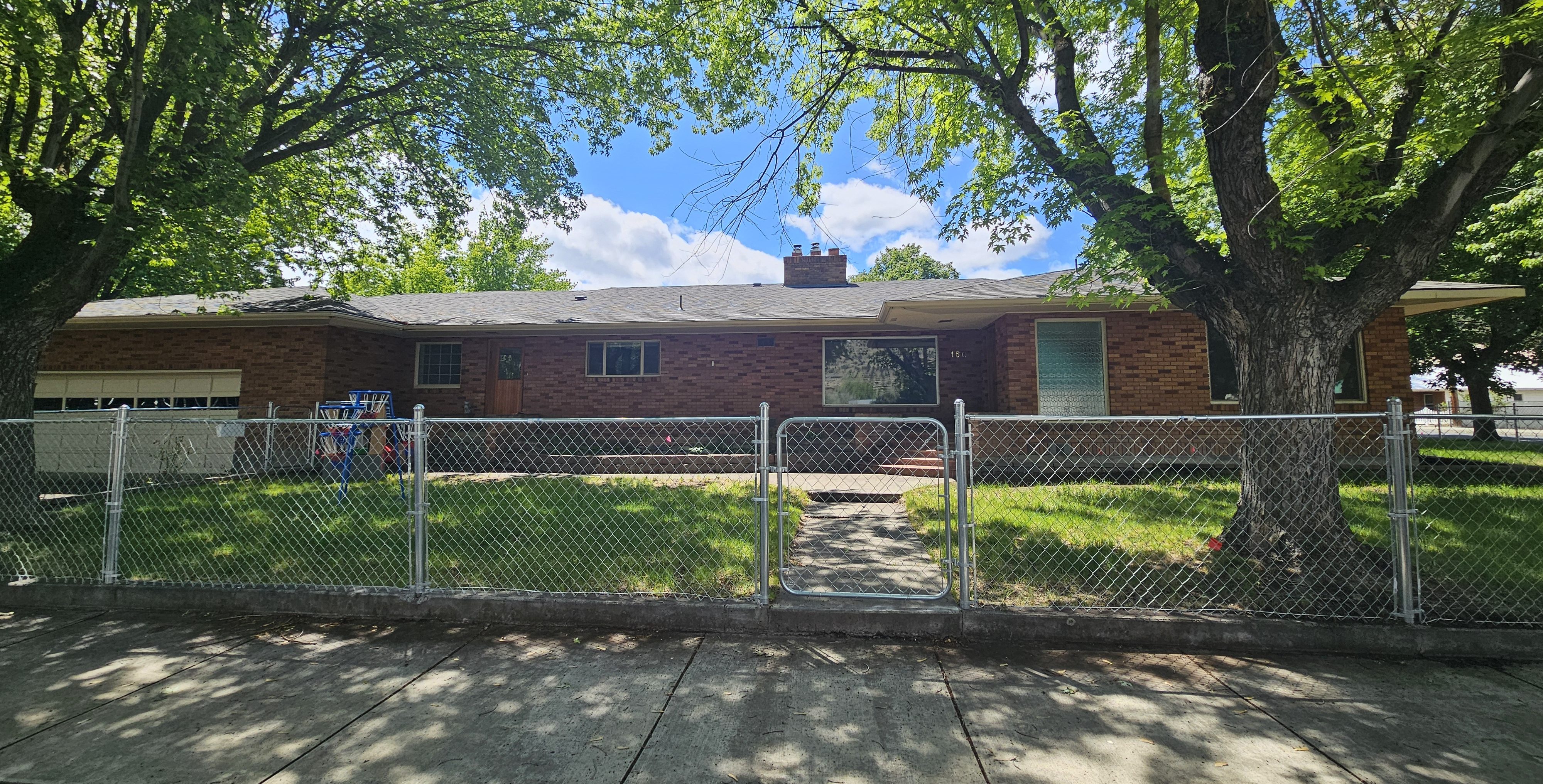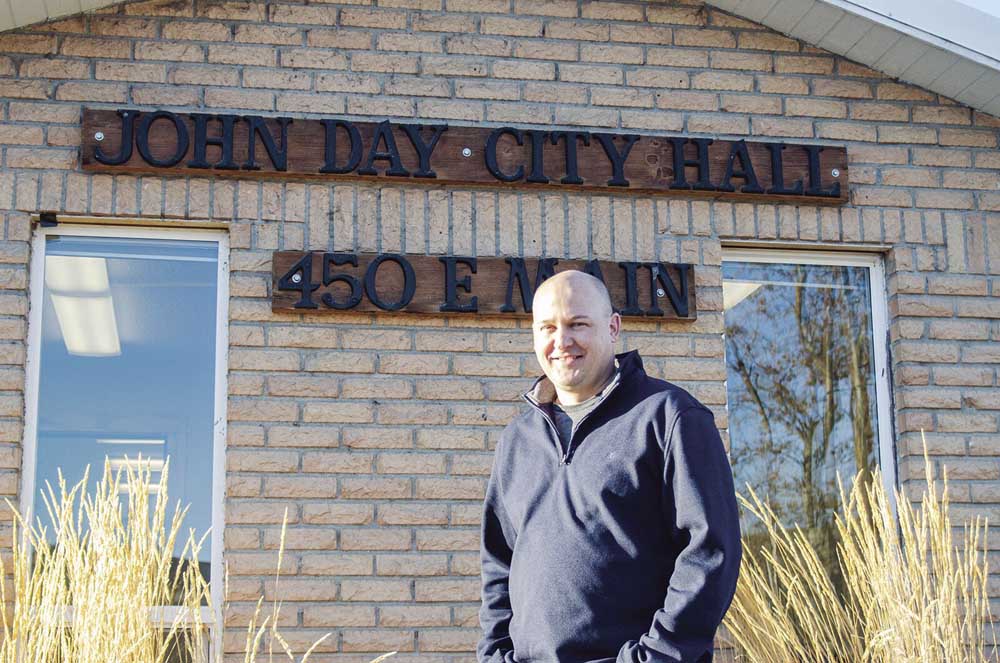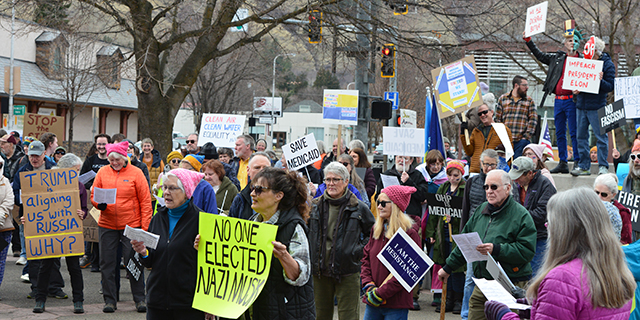HISTORY: The incorrigible exaggerator, philanderer, poet and county judge of Canyon City
Published 10:24 am Wednesday, October 19, 2016

- Several of Joaquin Miller's books sit on a shelf in his cabin preserved by the Grant County Historical Museum. Taken Wednesday, Sept. 21.
Though Joaquin Miller’s life is well documented, it is largely documented by Miller himself.
An incorrigible exaggerator, Miller was known for frequently stretching, if not entirely fabricating, the truth. As such it is necessary to take any information about Miller with a grain of salt. The writer Ambrose Bierce called him “the greatest liar this country has ever produced,” according to Literary Traveler, an online compendium of famous writers.
The self-styled Indian fighter, horse thief and gunslinger is known to have settled in Canyon City for a time and worked as a lawyer as well as a judge from 1866 to 1870. His cabin and many of his belongings have been preserved by the Grant County Historical Museum in Canyon City, according to museum documents.
Born Cincinnatus Hiner Miller in 1839, he later took the name Joaquin Miller for theatrical purposes. His quaker family lived in Liberty, Indiana. His mother was a homemaker and his father a school teacher. He had two brothers, George and James. When Miller was about 15, his family headed west in a wagon train to the Willamette Valley in Oregon, according to museum documents.
Soon after arriving in Oregon, Miller and a friend left to mine gold in Northern California. While there, Miller found working as the camp cook more to his liking than mining. However, he contracted scurvy from eating only what he cooked. In response to criticisms he wrote, “I cooked all winter for 27 men, and every man was alive in the spring,” according to Literary Traveler.
Miller is said to have turned down an invitation to take part in an unauthorized military expedition to Nicaragua but claims that he had fought in the country. He was forced to leave the mining camp after writing less than flattering poetry about another miner who did not take kindly to Miller’s words.
Upon leaving the camp, Miller lived with Native Americans in California. He is known to have fathered a daughter named Cali-Shasta, meaning lily of Shasta, with a native woman named Paquita. However, he grew tired of life with the natives and abandoned his daughter and Paquita to return to Oregon.
Miller attended Columbia College and is said to have graduated as valedictorian in a record three months. However, the school burned down shortly after, destroying all records and making it impossible to say what he studied.
He then returned to California to live with Paquita and Cali-Shasta. His time in California is thought to have inspired his book “Life Among the Modocs.” During this period, Miller ran into trouble with the law on two occasions. The first time he was alleged to be fighting alongside native Americans against settlers, and the second he was arrested for stealing horses after not being paid for work as a cowhand. As hanging was typically punished by death, Miller made it a point to escape quickly, according to Literary Traveler.
How he actually facilitated this escape is not known. Some records show that a cell mate was responsible for triggering a breakout, while Miller writes it was Paquita who slipped him a file allowing him to earn his own freedom.
From here, Miller returned again to Oregon. Despite being a fugitive and a complete lack of legal education, he took up work as a lawyer and then a teacher. After failing at these occupations, he answered an advertisement to work as a Pony Express rider between Idaho and Washington, according to Literary Traveler and museum documents.
In 1862, he purchased a pro-southern newspaper called the Democratic Register in Eugene. His inflammatory editorials quickly turned the public against him and ended his publishing days.
It was at the paper that Miller first read the poetry of “Minnie Myrtle,” the pen name of Theresa Dyer. The two began exchanging letters, and Miller eventually went to visit her in Cape Blanco. They were married three days after his arrival. For their honeymoon, they rode on horseback to Eugene through the Sierras, which gave both of them ample material for their poetry according to museum documents.
The couple gave birth to their first child, a girl name Maud, in the summer of 1863.
It was after the birth of their child that the couple moved to Canyon City, where Miller worked as a lawyer. His most notable case was his defense of William Kane, who was the second man hung in Grant County for the murder of a man named Sullivan, according to museum documents.
Miller ran for county judge in 1866, was elected and served until 1870. The family’s life in Canyon City was less than ideal, Miller was said to have been neglectful of his wife, preferring to spend his time writing, working or drinking. However, he was present enough to conceive two more children with Theresa, George and Harry. Theresa was liked by the people of Canyon City, who saw her as a patient woman with whom they sympathized with for putting up with Miller.
Theresa eventually left Miller, taking the children with her. She filed for divorce, destroying Miller’s ambitions of gaining a seat on the state supreme court. The children were placed in school at Miller’s expense. He sent regular child support payments as well as additional money to his ex-wife, according to museum documents and Literary Traveler.
He abandoned his pursuit of law and left Canyon City in 1870 for California to pursue poetry. It was during this time that he wrote some of his best known works, including “Songs of the Sierras.” Unable to find a publisher for the book in the United States, Miller headed to London.
In Europe, Miller took to wearing such eccentric items as sombreros, bright red shirts and high-heeled boots. This garb made him popular with the local women, and the publishing of his book of poetry, “Pacific Poems,” added greatly to his sense of self-importance. The British seemed to enjoy Miller’s character more than his poetry, while American critics were not nearly so kind and questioned his overall literacy, according to Literary Traveler.
Miller returned to California and settled in Oakland. He engaged in a number of affairs with married and unmarried women, worked a brief stint as a newspaper correspondent during the Klondike gold rush and worked in conservation towards the end of his life. He bought up a large area of land above Oakland and took to calling it the Hights, insisting on his own spelling. He lived here until his death in 1913.
His funeral was officiated by a unitarian priest who called him “the last of America’s great poets.” Before its completion, the event devolved into a riot, with attendees ransacking his home and police having to rescue his corpse, according to Literary Traveler.





